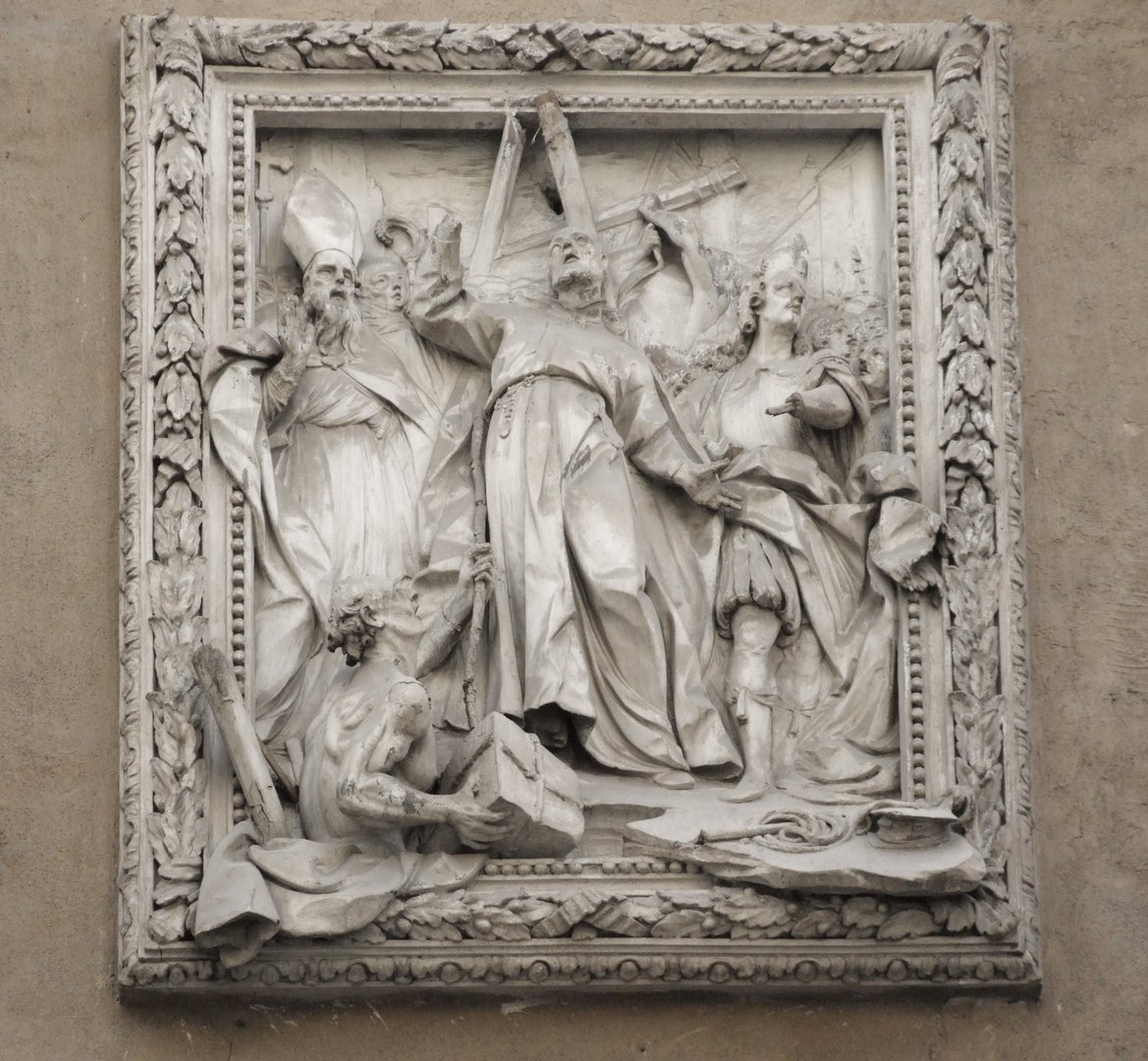Santa Ninfa Dei Crociferi on:
[Wikipedia]
[Google]
[Amazon]
The Church of Saint Nympha (




Image gallery
*
*
{{Authority control Ninfa Baroque architecture in Palermo Renaissance architecture in Palermo 17th-century Roman Catholic church buildings in Italy
Italian
Italian(s) may refer to:
* Anything of, from, or related to the people of Italy over the centuries
** Italians, an ethnic group or simply a citizen of the Italian Republic or Italian Kingdom
** Italian language, a Romance language
*** Regional Ita ...
: Chiesa di Santa Ninfa or Santa Ninfa dei Crociferi) is a Baroque-Mannerist
Mannerism, which may also be known as Late Renaissance, is a style in European art that emerged in the later years of the Italian High Renaissance around 1520, spreading by about 1530 and lasting until about the end of the 16th century in Ita ...
church of Palermo. The facade rises on Via Maqueda, a block north of the central intersection known as the Quattro Canti
Quattro Canti, officially known as Piazza Vigliena, is a Baroque square in Palermo, region of Sicily, Italy; it is considered the center of the historic quarters of the city. The site is the intersection of two major streets in Palermo, the Via Maq ...
, in the quarter A quarter is one-fourth, , 25% or 0.25.
Quarter or quarters may refer to:
Places
* Quarter (urban subdivision), a section or area, usually of a town
Placenames
* Quarter, South Lanarkshire, a settlement in Scotland
* Le Quartier, a settlement ...
of Seralcadi, within the historic centre of Palermo. The church belongs to the Camillians
The Camillians or Clerics Regular, Ministers to the Sick ( la, Clerci Regulari Ministeri Infirmaribus) are a Roman Catholic religious order, founded in 1582 by St. Camillus de Lellis (1550-1614). A large red cross was chosen by the founder as the ...
(also known as ''"Crociferi"'').
History
The church is dedicated to one of the female patron saints of Palermo: Ninfa or Nympha who had lived in Palermo was putatively martyred for her faith in the 4th century. It is one of the first buildings erected after the opening of Via Maqueda, the second most important street of the city. The order of theCamillians
The Camillians or Clerics Regular, Ministers to the Sick ( la, Clerci Regulari Ministeri Infirmaribus) are a Roman Catholic religious order, founded in 1582 by St. Camillus de Lellis (1550-1614). A large red cross was chosen by the founder as the ...
had been founded by the later canonized Camillus de Lellis in 1582, and rapidly spread throughout Italy. Its adherents, known for wearing cassocks with a red cross, and known as the ''Crociferi'' were in demand for their service in ministering to the sick.
Construction of the church began on 10 August 1601 with funds assigned by the Senate of Palermo and donations. Saint Camillus de Lellis attended this inauguration. In the same area the house of the ''Crociferi'' was erected.
The original design was probably prepared in Rome
, established_title = Founded
, established_date = 753 BC
, founder = King Romulus (legendary)
, image_map = Map of comune of Rome (metropolitan city of Capital Rome, region Lazio, Italy).svg
, map_caption ...
. In Palermo many architects were involved in the construction: Giovanni Macolino, Giacomo Amato, Giuseppe Clemente Mariani, Ferdinando Lombardo and Giuseppe Venanzio Marvuglia. The church was open in 1660, but because of financial difficulties, the construction was completed only in 1750 with the conclusion of the façade designed by Ferdinando Lombardo. The church houses many artworks of important artists.
Some relics of Saint Camillus are held in the church.
Sir John Acton was buried here after his death in 1811.
Art



Paintings
Oil on canvas: * ''Nympha and the other Virgins of Palermo with Saint Joseph, Mary and the Most Holy Trinity'', Gioacchino Martorana * ''Saint Camillus ascends to Heaven'', Gaspare Serenario * ''Death of Saint Joseph'',Guglielmo Borremans
Guglielmo Borremans or Guglielmo Fiamingo (1670–1744) was a Flemish painter whose documented career took principally place in Italy, in particular Naples, Cosenza and Sicily. Here he was one of the pre-eminent late-Baroque fresco painters of th ...
* ''Holy Family'', Guglielmo Borremans
* ''Saint Joseph the Carpenter'', Guglielmo Borremans
* ''Martyrdom of Saint Venantius'', unknown author
* ''God the Father'', unknown author
Panel painting:
* ''Our Lady of Health'', unknown author
Frescoes:
* ''Saint Paul and the Triumph of the Cross'', Gioacchino Martorana
* ''Saint Jerome'', Gioacchino Martorana
* ''Saint Gregory the Great'', Gioacchino Martorana
* ''Saint Augustine'', Gioacchino Martorana
* ''Saint Ambrose'', Gioacchino Martorana
* ''Saint Philip Neri in Glory'', Alessandro D'Anna
* ''Saint Magdalene penitent'', Alessandro D'Anna
* ''Saint Liberalis'', unknown author
* ''Saint Evansia'', unknown author
* ''Adoration of the Bronze Serpent'', unknown author
* ''Assumption of the Virgin'', unknown author
Sculptures
High reliefs: * ''Martyrdom of Saint Nympha'', Gaspare Firriolo * ''Saint Camillus takes care of the infirms'', Vittorio Perez * ''The groundbreaking of the church'', Vittorio Perez Statues: * ''Saint John the Baptist'',Giacomo Serpotta
Giacomo Serpotta (10 March 1656 – 27 February 1732) was an Italian sculptor, active in a Rococo style and mainly working in stucco.
Biography
Serpotta was born and died in Palermo; and may have never left Sicily. His skill and facility with st ...
* ''Mary Magdalene'', Giacomo Serpotta
* ''Virgin Mary'', Giacomo Serpotta
* ''Our Lady of Sorrows'', Giuseppe Milanti
* ''Simeon'', Andrea Sulfarello
* ''Jeremiah'', Gaspare La Farina
* ''Heart of Jesus'', unknown author
* ''Justice'', unknown author
* ''Penance'', unknown author
The church houses several funeral monuments.
See also
* Seralcadi * Via Maqueda * Churches in PalermoReferences
External links
*Image gallery
*
*
{{Authority control Ninfa Baroque architecture in Palermo Renaissance architecture in Palermo 17th-century Roman Catholic church buildings in Italy